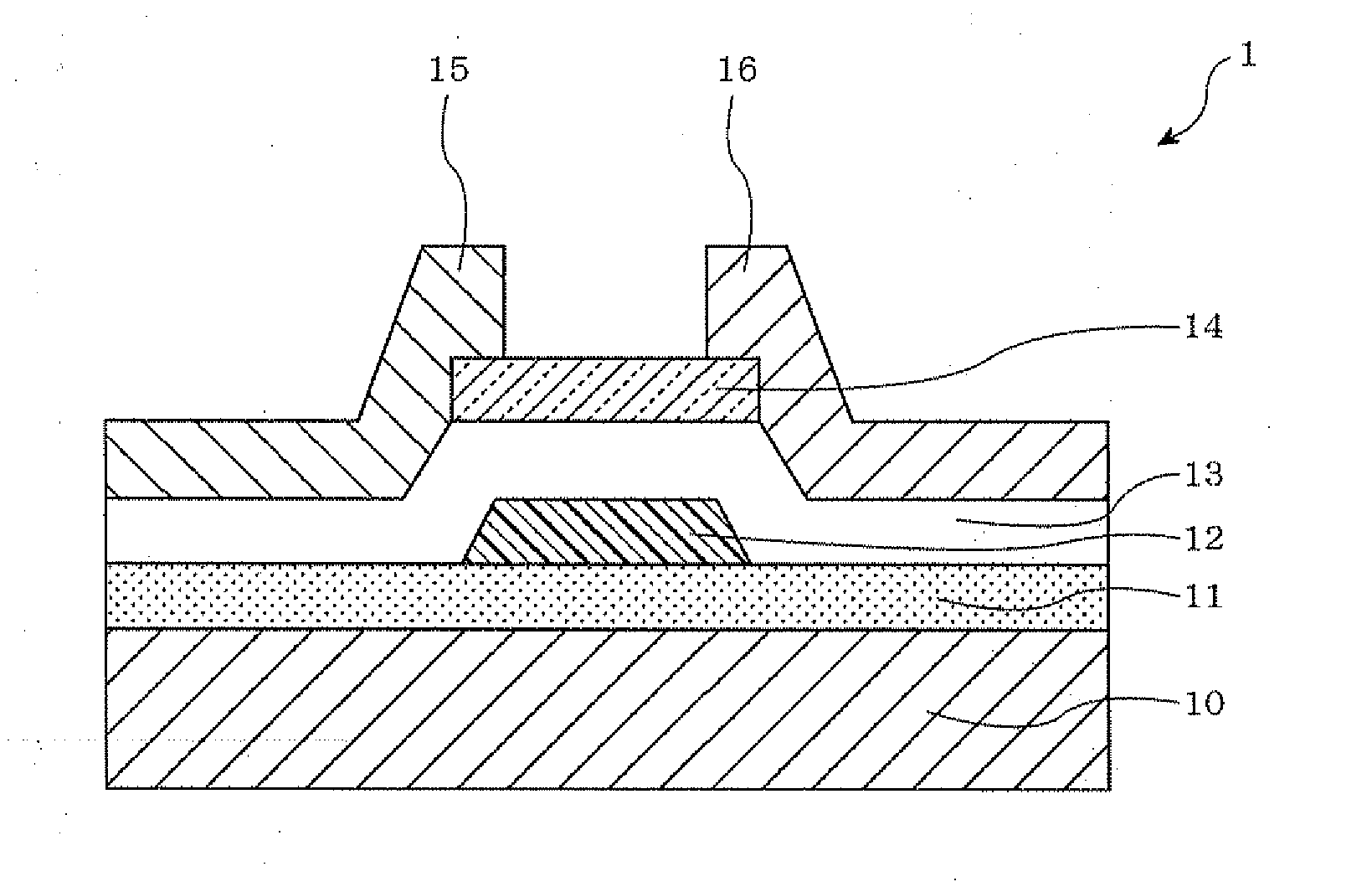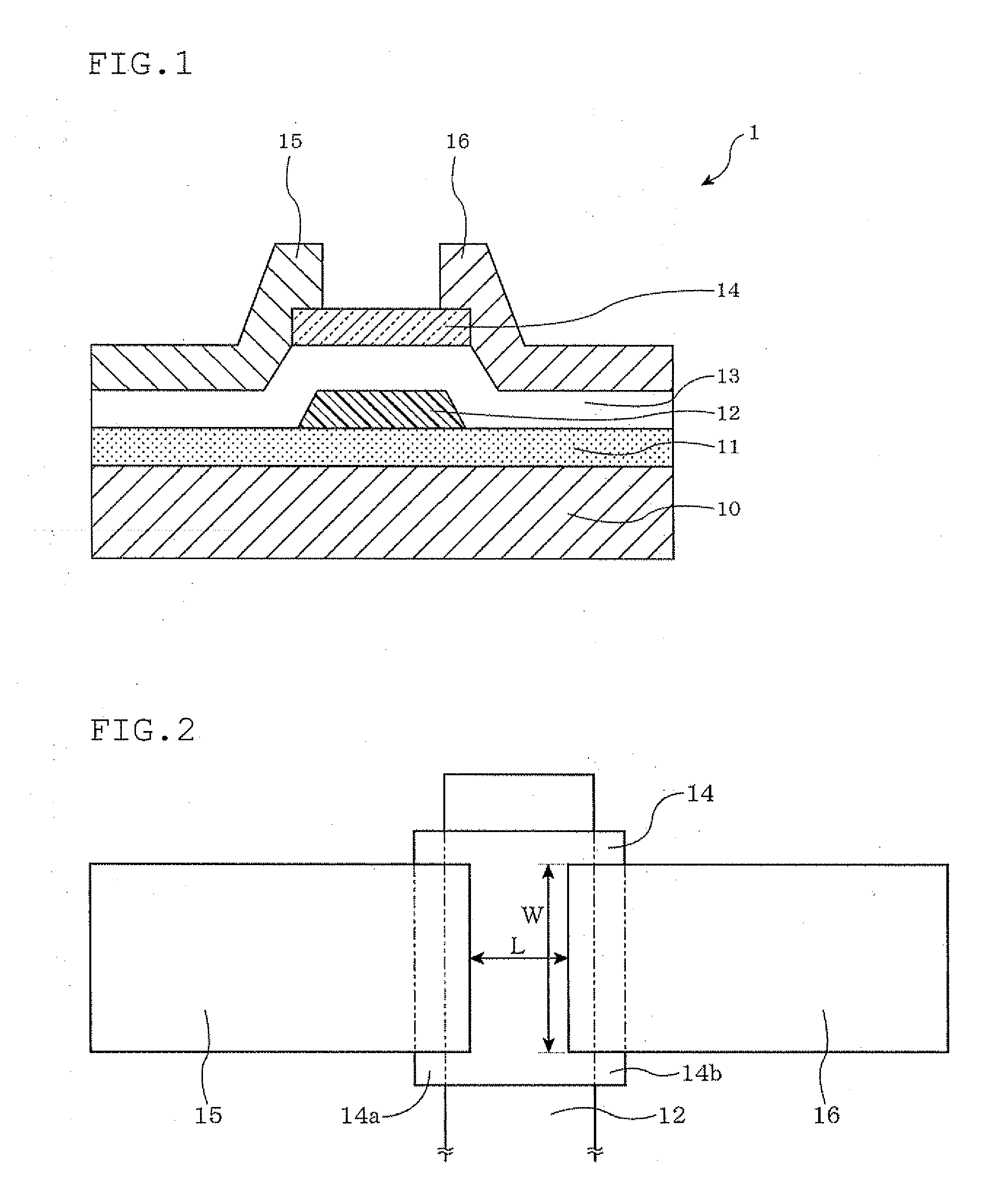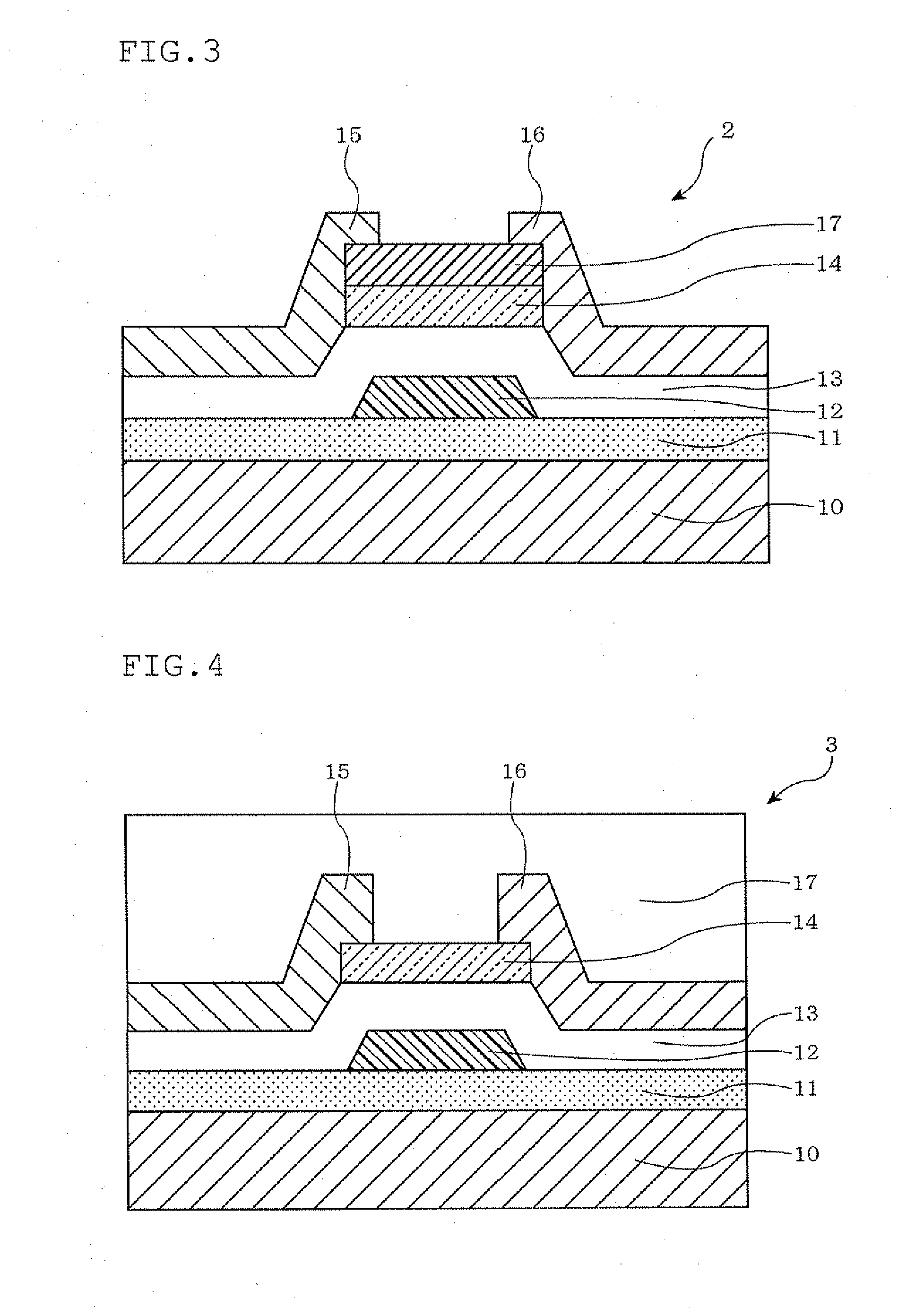Oxide semiconductor field effect transistor and method for manufacturing the same
a technology of field effect transistor and oxide semiconductor, which is applied in the direction of transistors, vacuum evaporation coatings, coatings, etc., can solve the problems of difficult production of crystalline silicon-based thin films on glass substrates or on substrates formed of organic substances, large amount of energy and a large number of steps, and difficulty in reducing production costs such as the reduction of the number of masks, so as to achieve easy production on the industrial scale, reduce the effect of mobility and poor smoothness
- Summary
- Abstract
- Description
- Claims
- Application Information
AI Technical Summary
Benefits of technology
Problems solved by technology
Method used
Image
Examples
example 1
1 Production of a Sputtering Target
[0199]As the raw material, powder of indium oxide, zinc oxide and zirconium oxide were mixed such that the atomic ratio [In / (In+Zn+Zr)] became 0.48, the atomic ratio [Zn / (In+Zn+Zr)] became 0.50 and the atomic ratio [Zr / (In+Zn+Zr)] became 0.02. The resulting mixture was supplied to a wet ball mill, and pulverized and mixed for 72 hours to obtain raw material fine powder.
[0200]The resulting raw material fine powder was granulated, and press-molded into a size of 10 cm in diameter and 5 mm in thickness. The molded product was put in a firing furnace, and fired at 1500° C. for 12 hours, whereby a sintered body (target) was obtained.
[0201]The target had a bulk resistance of 3 mΩ and had a theoretical relative density of 0.99. The target had a high uniform appearance free from unevenness in color.
[0202]The theoretical relative density was obtained by calculating the ratio of the density calculated from the specific gravity of each oxide and the amount ra...
example 30
[0263]As the raw material, indium oxide powder, zinc oxide powder and zirconium oxide powder were mixed such that the atomic ratio [In / (In+Zn+Zr)] became 0.4, the atomic ratio [Zn / (In+Zn+Zr)] became 0.4 and the atomic ratio [Zr / (In+Zn+Zr)] became 0.2. The mixture was supplied to a wet ball mill, and pulverized and mixed for 72 hours, thereby to obtain raw material fine powder.
[0264]The resulting raw material fine powder was granulated, and press-molded into a size of 20 cm in diameter and 5 mm in thickness. The molded product was put in a firing furnace, and fired at 1400° C. for 12 hours, whereby a sintered body (target) was obtained.
[0265]The target had a bulk resistance of 5 mΩ, a theoretical relative density of 0.98 and a transverse rupture strength of 12 kg / mm2. The target was a uniform appearance free from unevenness in color.
example 31
Target I
[0271]As the raw material, 5N (purity: 99.999%) indium oxide powder (INO04PB, manufactured by Kojundo Chemical Laboratory Co., Ltd.), 5N zinc oxide powder (ZNO04PB, manufactured by Kojundo Chemical Laboratory Co., Ltd.) and 5N aluminum oxide powder (manufactured by Kojundo Chemical Laboratory Co., Ltd.) were mixed such that the atomic ratio [In / (In+Zn+Al)] became 0.48, the atomic ratio [Zn / (In+Zn+Al)] became 0.50 and the atomic ratio [Al / (In+Zn+Al)] became 0.02. The mixture was supplied to a wet type ball mill and pulverized and mixed for 72 hours to obtain raw material fine powder.
[0272]The resulting raw material fine powder was granulated, and press-molded into a size of 10 cm in diameter and 5 mm in thickness. The molded product was put in a firing furnace, and fired at 1500° C. for 12 hours, whereby a sintered body (target) was obtained.
[0273]The target was pulverized and analyzed by ICP, and it was found that impurities such as Sn (tin), Ge (germanium), Si (silicon), Ti...
PUM
| Property | Measurement | Unit |
|---|---|---|
| temperature | aaaaa | aaaaa |
| thickness | aaaaa | aaaaa |
| temperature | aaaaa | aaaaa |
Abstract
Description
Claims
Application Information
 Login to View More
Login to View More - R&D
- Intellectual Property
- Life Sciences
- Materials
- Tech Scout
- Unparalleled Data Quality
- Higher Quality Content
- 60% Fewer Hallucinations
Browse by: Latest US Patents, China's latest patents, Technical Efficacy Thesaurus, Application Domain, Technology Topic, Popular Technical Reports.
© 2025 PatSnap. All rights reserved.Legal|Privacy policy|Modern Slavery Act Transparency Statement|Sitemap|About US| Contact US: help@patsnap.com



